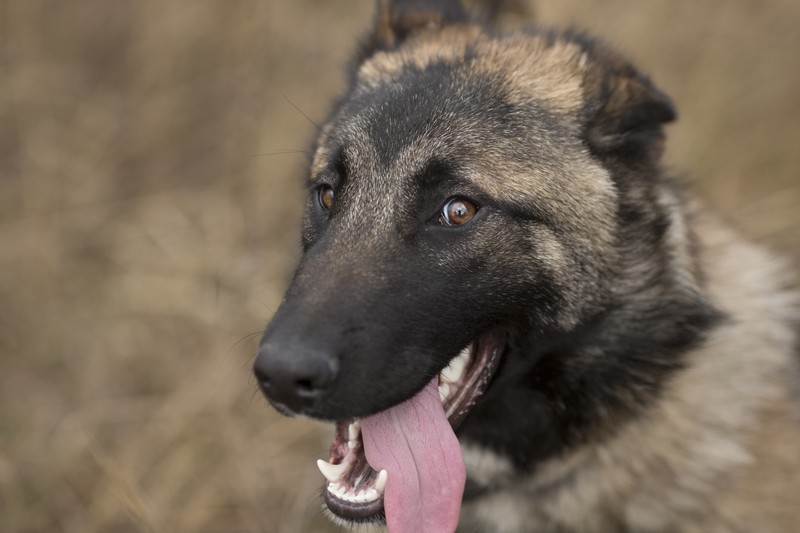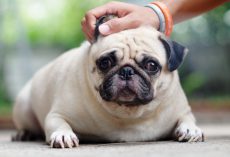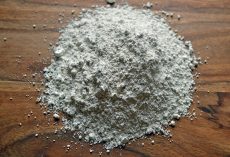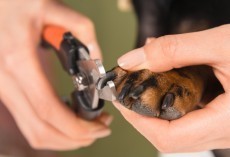Gingivitis isn't just a problem that plagues humans. Dog's can get it too! And one of the things that comes along with gingivitis is really smelly breath, among other things, that you and your pooch simply don't need in your lives. Avoid gum disease and tooth decay at all cost with these simple solutions for your pooch:
1. Canine Tooth-Brushing Kit
Get yourself a toothbrush made especially for canines or a clean piece of soft gauze to wrap around your finger. Ask your vet for a toothpaste made especially for canines or make a paste out of baking soda and water. Never use fluoride with dogs under six months of age—it can interfere with their enamel formation. And please do not use human toothpaste, which can irritate a dog's stomach. Special mouthwash for dogs is also available—ask your vet.2. Brightening the Pearly Whites
Taking these steps will make brushing a lot easier for the both of you:
First get your dog used to the idea of having her teeth brushed. Massage her lips with your finger in a circular motion for 30 to 60 seconds once or twice a day for a few weeks. Then move on to her teeth and gums.
When your pooch seems comfortable being touched this way, put a little bit of dog-formulated toothpaste or a paste of baking soda and water on her lips to get her used to the taste.
Next, introduce a toothbrush designed especially for dogs—it should be smaller than a human toothbrush and have softer bristles. Toothbrushes that you can wear over your finger (or a clean piece of gauze) are also available and allow you to give a nice massage to your dog's gums.
Finally, apply the toothpaste to her teeth for a gentle brushing, as in step 7.
A veterinary exam beforehand may be helpful to find out if your dog's gums are inflamed. If your dog has mild gingivitis, brushing too hard can hurt her gums.3. Brushing Technique
Yes, there is actually a technique! Place the brush or your gauze-wrapped finger at a 45-degree angle to the teeth and clean in small, circular motions. Work on one area of your dog's mouth at a time, lifting her lip as necessary. The side of the tooth that touches the cheek usually has the most tartar, and giving a final downward stroke can help to remove it. If your dog resists having the inner surfaces of her teeth cleaned, don't fight it—only a small amount of tartar accumulates there. Once you get the technique down, go for a brushing two or three times a week.4. Chew on This
chew toys can satisfy your dog's natural desire to chomp, while making his teeth strong. Gnawing on a chew toy can also help massage his gums and help keep his teeth clean by scraping away soft tartar. Ask your vet to recommend toxin-free rawhide, nylon and rubber chew toys.
P.S.: Gnawing also reduces your dog's overall stress level, prevents boredom and gives him an appropriate outlet for his natural need to chew.5. Diet for Healthy Teeth
Ask your vet about a specially formulated dry food that can slow down the formation of plaque and tartar. Also, avoid feeding your dog table scraps, instead giving him treats that are specially formulated to keep canine teeth healthy.
We have multiple chew toys at home that come with “tartar control”, and the best part? Our dogs LOVE them. So at the very least, pick some of these up at your local pet supply store or talk to your vet about which options are available for pooch. We love the ASPCA and want to thank them for collecting the information above and putting together such a great list! For even more doggy dental hygiene tips, you can read about them here.
Do You Brush Your Dogs Teeth?
If you brush your dogs teeth or have some tips for us and our readers about which methods have worked best for you, please share them with us in the comments section below. If you have any photos or videos of them having their teeth worked on, we'd love to see it! Share either (video or images) in the comments section. We check them often!









